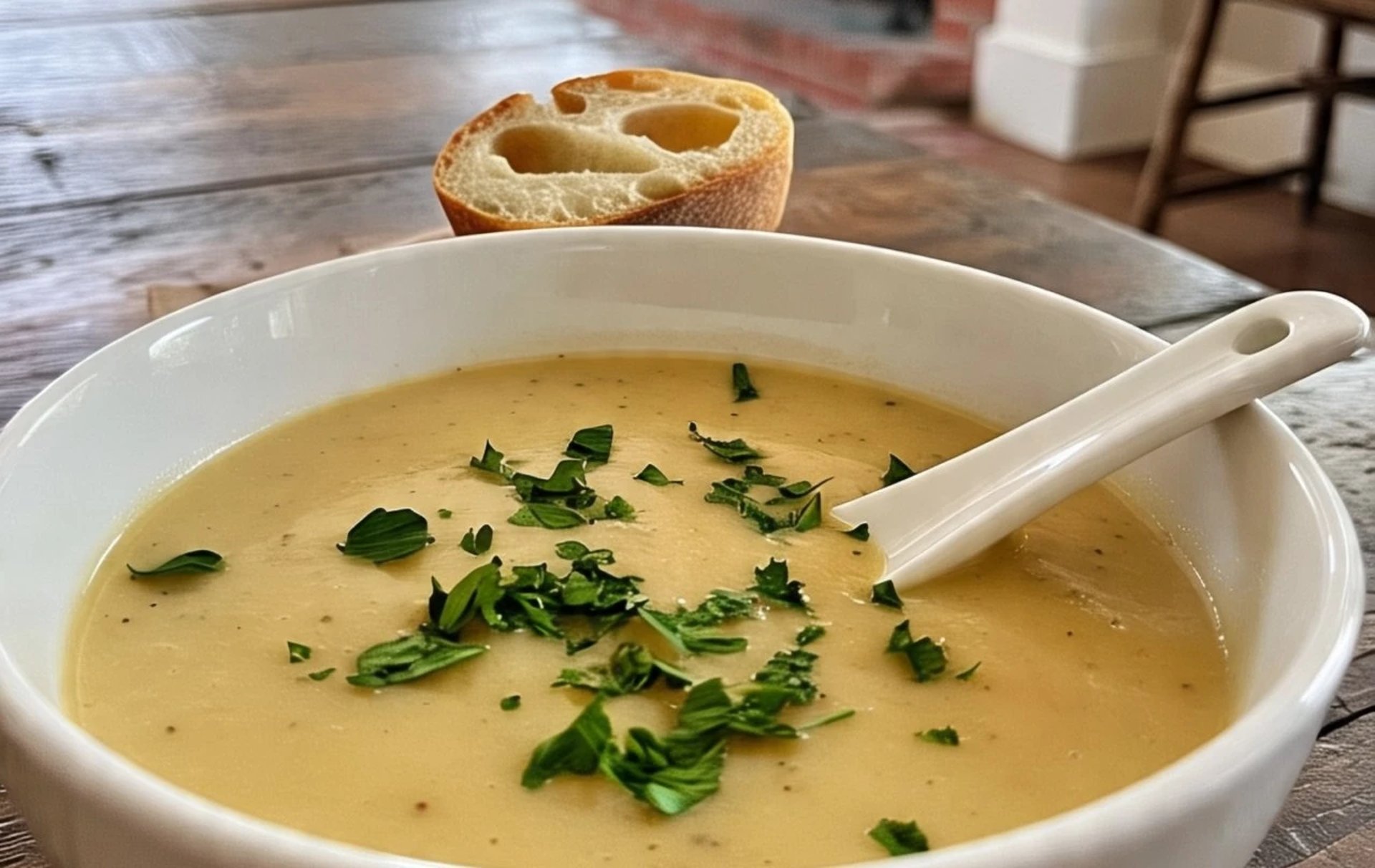
ABOUT SOUPS
Soup is a liquid dish made by simmering ingredients like vegetables, meats, or legumes in water or stock. It can be served as an appetizer, side, or main course. Soups vary in texture and flavor, ranging from clear broths to thick, creamy preparations.
Dave Kitchens
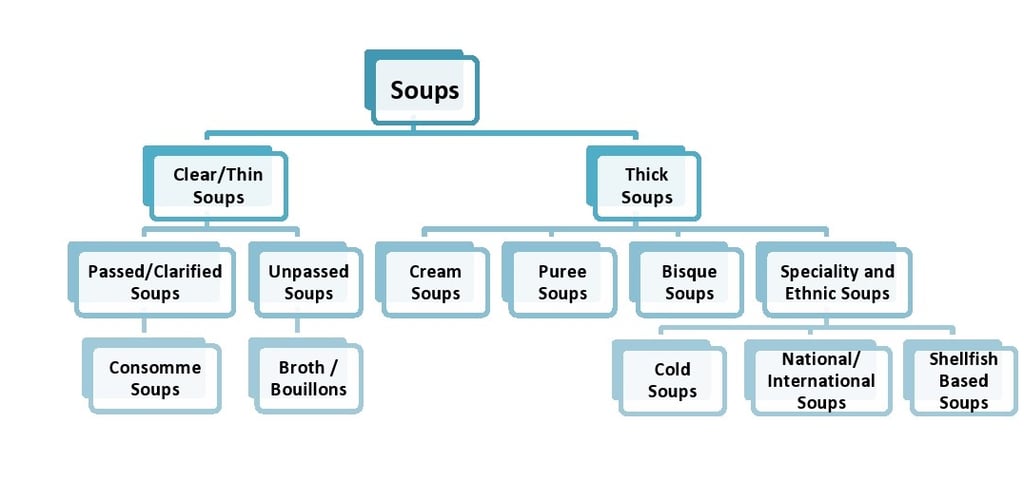

SOUP
Soup is mostly a liquid meal that is typically served hot or warm. It is made by cooking or combining meat, vegetables, or other ingredients with stock, broth, or water.
It's a versatile dish that can be classified as either a thick soup (such as purees or cream soups) or a clear soup (like broths). Although they can be the main course, soups are usually served as an appetizer.
BROTHS
CONSOMMÉ SOUP
Made from a richly flavored stock or broth that has been clarified to eliminate fat and sediment, consommé is a sort of transparent soup that originated in France. Egg whites are typically used in the clarifying process to bind contaminants, which are subsequently eliminated.
A broth is a soup made using stock that hasn't been thickened. It comes unpassed and is topped with chopped meats, veggies, or herbs. As an example, Scotch broth, minestrone, etc. Reduced stock or glaze should be added when serving broths as soups in order to give the soup body.
A glaze refers to a reduction of the soup's liquid to a thick, syrupy consistency, creating a glossy coating on the ingredients and enhancing the flavor.
BOUILLON
Usually created by boiling meat, vegetables, or fish, bouillon soup is a clear, tasty broth. It makes a flexible foundation for soups and sauces, but it can also be eaten as a simple soup.
It is served unpassed, has a seafood foundation, and is topped with chopped herbs, vegetables, and seafood. It is similar to broth. Seafood bouillon, crab bouillon, and so forth are examples.
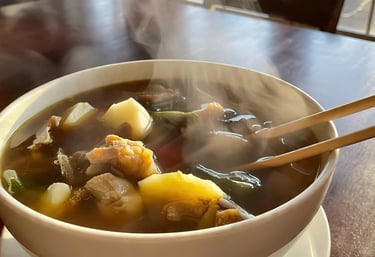

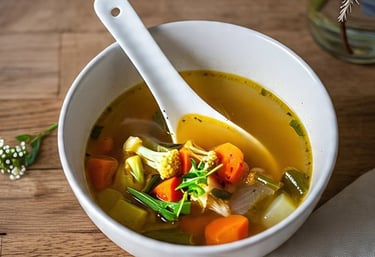

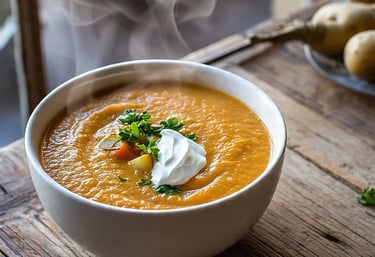

PUREE
Puree soups are thick soups created by first cooking and then pureeing the soup's vegetables or items. Soups are made with pureed lentils, tomatoes, and various other ingredients. When blended in soups, starchy vegetables such as leguminous plants, potatoes, or grains commonly work as self-thickeners, eliminating the need for additional thickening components. The consistency of the soup is thick.
Common puree soups are
Purée Compiègne: Purée of white rajma (haricot beans) garnished with sorrel, chervil shreds, and butter added at the last minute.
"Purée Compiegne" likely refers to purée Soissonaise, a type of bean purée, as described in Auguste Escoffier's "Le Guide Culinaire."
Mushroom Soup: The traditional cream of mushroom soup calls for you to puree half of the soup for that rich, creamy mouthfeel and leave the other half as is for hits of meaty texture.
CREAM SOUP
A thick soup is called a cream soup. Cream soups are typically made with vegetables, though they can also be made with meat. Béchamel sauce thickens it, and cream is added at the end.
Examples:
Cream of tomato soup
Cream of chicken soup
Cheesy cauliflower flask soup
Cream of mushroom soup.
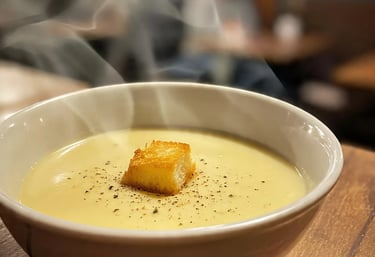

Cream of Crecy soup: It is a puree of carrots & rice, and you add butter & cream just before serving.
Cream of Washington soup: is a puree of maize blended with cream.
VELOUTÉ SOUP
A thick soup that has been thickened with a blond roux, passed, and finished with a liaison is called velouté. They could be made with chicken stock or vegetables.
A blond roux is obtained by cooking roux until it turns blonde in color.
The texture of velouté is smooth & velvet-like.
Example
Chicken velouté soup
Seafood velouté soup.


CHOWDER
What is roux?
Roux is a thickening agent used in stews, soups, and sauces that is made by cooking equal proportions of flour and fat together by weight.
The cooked roux is then added to a liquid (like broth or milk) to create a thickened sauce.
Chowders originate from the United States, and the most famous variety comes from Manhattan, hence the term Manhattan chowder. They are thick, heavy soups that get their consistency from potatoes. Crackers are typically added immediately before serving.
Chowders are often seafood-based soups that are thickened with potatoes and finished with cream or milk; they are not strained.
For example, corn chowder, Clam chowder, seafood chowder, etc.

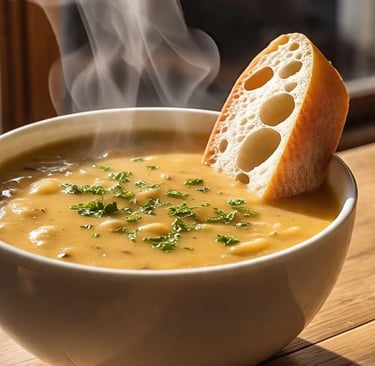
BISQUE
It is a shellfish-based soup that is shared around and can be garnished with diced seafood. It is traditionally thickened with rice and finished with cream, as seen in bisque d'ecrevisse (seafood bisque soup and lobster bisque).
It is little of thick rice cream soup with small pieces of cooked shellfish floating about to give flavor and color. A little bit of wine is added to enhance the flavor.
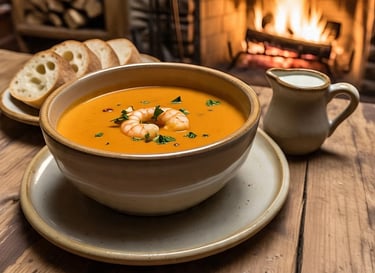

International soups
The term "international soups" refers to regional soups that have become popular worldwide. Certain soups have their origins in a certain area and are connected to that location. Since the New England clam chowder helped the early colonists survive several winters, these soups have huge traditions.
Green turtle soup, Scotch broth—England.
Laberkroedel—Germany.
Mulligatawny—India.
Bouillabaise—France.
French onion soup & petite marmite—France.
Minestrone, Ribollita—Italy.
Scotch broth & cock-a-leekie—Scotland.
Manhattan clam chowder --- America.
Bortsch Polonais—Poland.
Olla podrida & gazpacho—Spain.
Hotchpot flamanda—Belgium.
Bobó de Camarão—Brazil.
Paprika soup—Hungary.
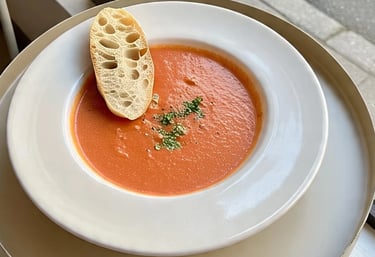

Additions that improve a dish's flavor, texture, and presentation are known as garnishes and accompaniments.
Soups are usually served with soup sticks and buttery bread rolls.
Chinese soups are served with Chinese sauces such as soy, tomato, and chili with vinegar.
Garnishes and Accompaniments
Garnishes:
- Fresh herbs (e.g., parsley, chives, or dill)
- Croutons or crusty bread
- Cream or crème fraîche
- Paprika or other spices
- Microgreens or edible flowers
Accompaniments:
- Crusty bread or baguette slices
- Crackers or crostini
- Grilled cheese or paninis
- Salad or roasted vegetables
- Garlic bread or breadsticks

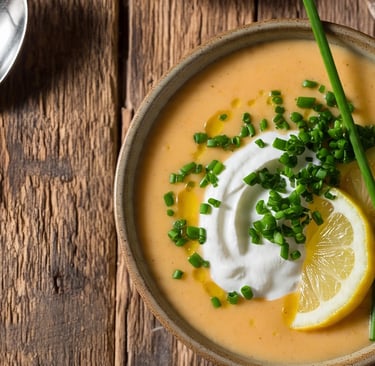
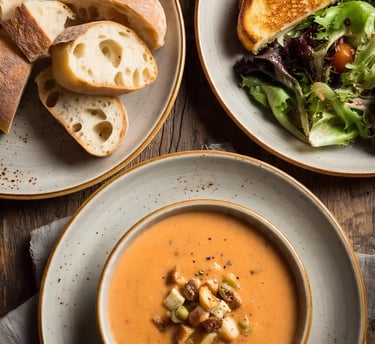

Commonly used garnishes for soups are
Croutons: diced or fancy-shaped cuts of bread, toasted or deep-fried.
Profiteroles, prepared from choux paste, are like miniature cream puffs, which may be filled or used plain.
Cereals, like rice or barley, are also garnished.
Cheese: cheese balls or grated Parmesan served with croutons on one side.
Cream: unsweetened whipped cream or sour cream.
Meats & poultry: usually small dice or juliennes.
Seafood: Dices or flakes, pieces distinguishable.
Pastas: Noodles, spaghetti, and other pasta products like cornets and stars.
Vegetables: Cut in various sizes and shapes, like juliennes, round slices, and dices.